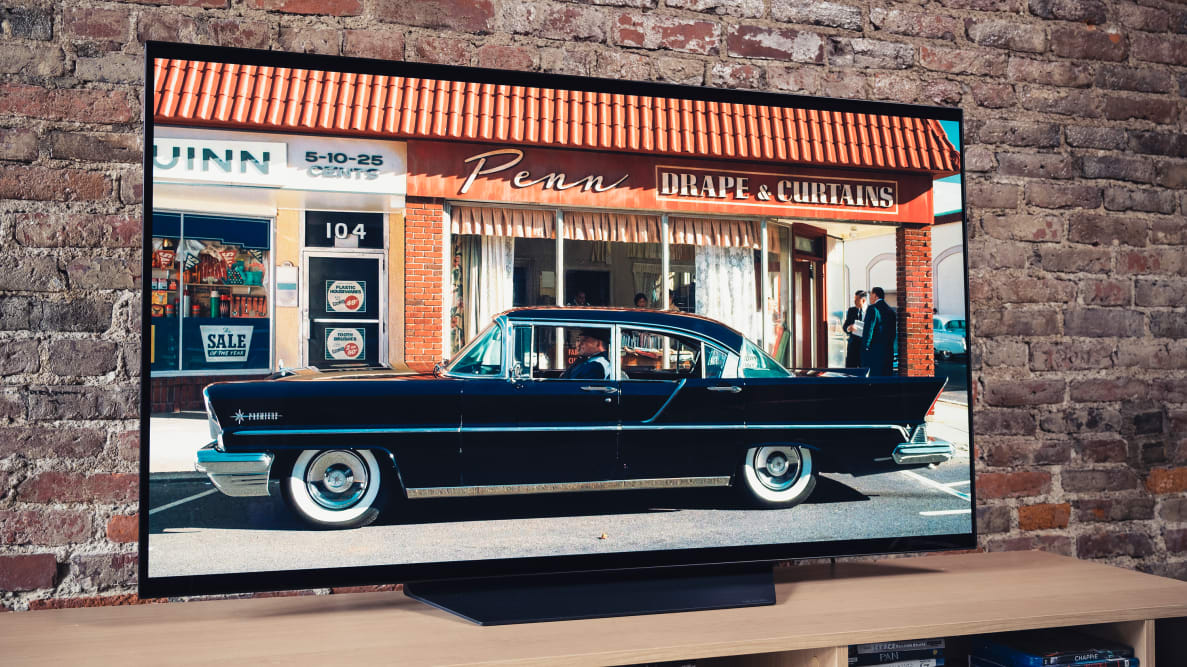Pros
-
Perfect black levels
-
Voluminous color
-
Incredible design
Cons
-
Not quite as bright as other high-end TVs
We love the BX's incredible performance, its ultra-thin design, and its future-proof hardware, but its middle-of-the-road peak brightness might give some shoppers pause. No one likes to think of their high-end investment as a compromise, and for all of its brilliance, the BX isn't quite as impressive as the other OLED TVs we've tested this year.
When all is said and done, the LG BX will most likely be one of the five best TVs we review this year. Ultimately, it's up to shoppers to decide if it's worth spending more on something a bit more versatile.
(Note: Due to COVID-19 complications, this review leans heavily on test results in lieu of hands-on time with the TV.)
About the LG BX Series OLED TV
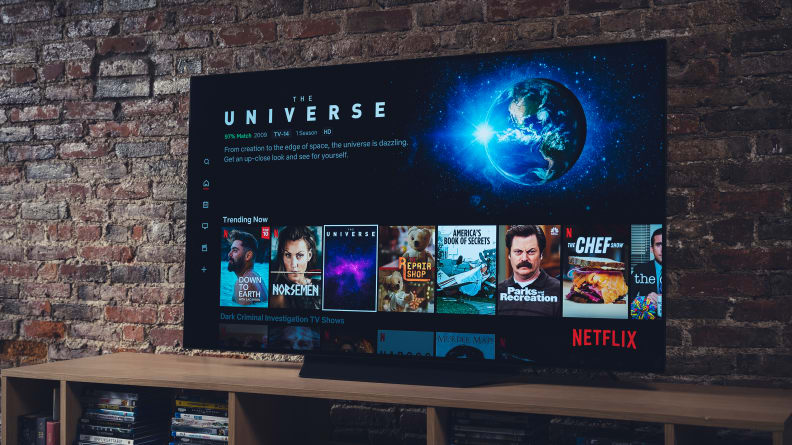
The BX features LG's webOS smart platform.
LG's BX is only available in two screen sizes:
- 55-inch (LG OLED55BXPUA), MSRP $1,499.99
- 65-inch (LG OLED65BXPUA), MSRP $2,299.99
Different sizes of TVs in a series tend to perform very similarly to one another, and this is especially true for OLED TVs. Here's a rundown of what you're getting with the LG BX, regardless of which size you choose:
- Resolution: 4K (3,840 x 2,160)
- HDR support: HDR10, HLG, Dolby Vision
- Native refresh rate: 120 Hz
- Smart platform: Yes (LG webOS)
- Color: DCI-P3/10-bit color space
- Processor: a9 (third generation)
- Other features: FreeSync, G-Sync
The LG BX ships with the newest iteration of LG’s Magic Remote, which offers motion control in addition to basic remote control functionality. Built into the TV’s software is the newest version of webOS, LG’s smart platform.
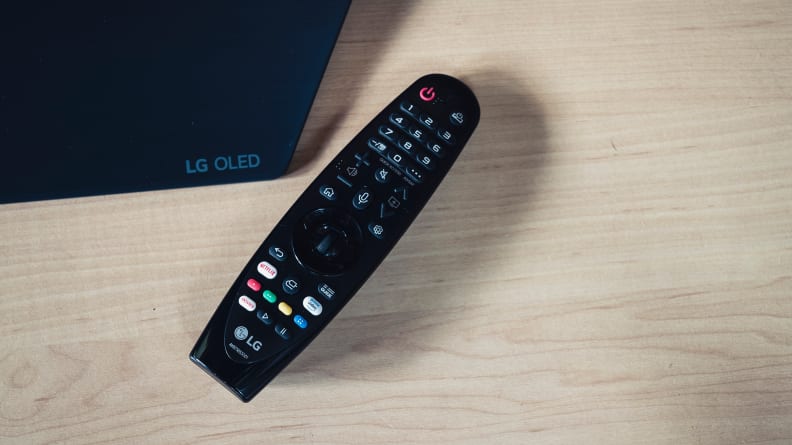
The BX ships with LG's Magic Remote, which offers motion control.
Performance Data
Before testing each TV, we make sure the panel is on and receiving a continuous signal for at least 24 hours, allowing the pixels plenty of time to warm up. The LG BX received the standard warm-up time before any readings were taken.
For SDR tests, we used the LG BX’s “ISF Expert (Bright Room)” picture setting. For HDR tests, we used LG’s “Cinema (HDR)” picture setting. We’ve chosen these settings because of their accuracy, but results may vary across picture modes.
We use a standard ANSI checkerboard pattern for most of our basic contrast tests—including the ones reported below—but we also use white and black windows ranging from 2% to 90% to test how well the contrast holds up while displaying varying degrees of brightness.
I'll expand on our test results throughout the review, but for now, here are some key takeaways:
• HDR contrast (brightness/black level): 193.6 nits/0.001 nits (ANSI checkerboard) • SDR contrast (brightness/black level): 126.9 nits/0.001 nits (ANSI checkerboard) • HDR peak brightness: 547.4 nits (20% white window) • HDR color gamut coverage: 97% (DCI-P3/10-bit) • SDR color gamut coverage: 100% (Rec.709)
Connectivity
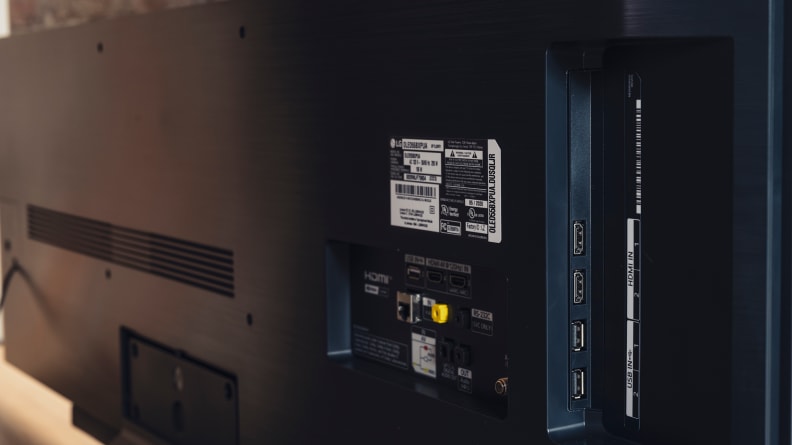
Connectivity options can be found in two cutouts on the back of the BX.
The LG BX is equipped with enough connectivity options to accommodate both casual users and dedicated home theater aficionados. Like the LG CX, the BX includes four HDMI 2.1 ports, which will ultimately support features like 4K resolution gaming at 120 Hz.
I'll expand on this a bit more later on, but for now, here's a look at what you'll find on the back of the LG BX’s panel:
• 4x HDMI 2.1 (1x ARC) ports • 3x USB 2.0 ports • LAN ethernet port, RF input, optical audio output • 3.5mm headphone jack
What We Like
Nigh infinite contrast, beautiful color, superb motion
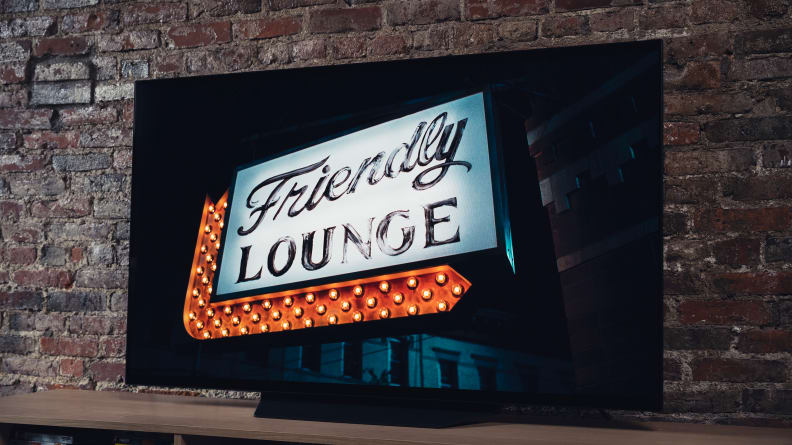
OLED TVs are known for their near-perfect black levels.
OLED TVs are capable of achieving uniformly near-perfect black levels thanks to their self-illuminating pixels, and it's hard to overstate just how much of a positive impact this has on overall picture quality. To these old eyes, there's nothing else quite like it in the TV industry today.
It's true that quantum dot TVs can (and often do) get twice as bright as the BX, but because these TVs rely on a backlight, these searing highlights are coupled with black levels that can't get as dark as they would on an OLED display. To be clear, I've seen some extraordinary-looking quantum dot TVs over the years, but none have been able to recreate the secret sauce of OLED-based contrast.
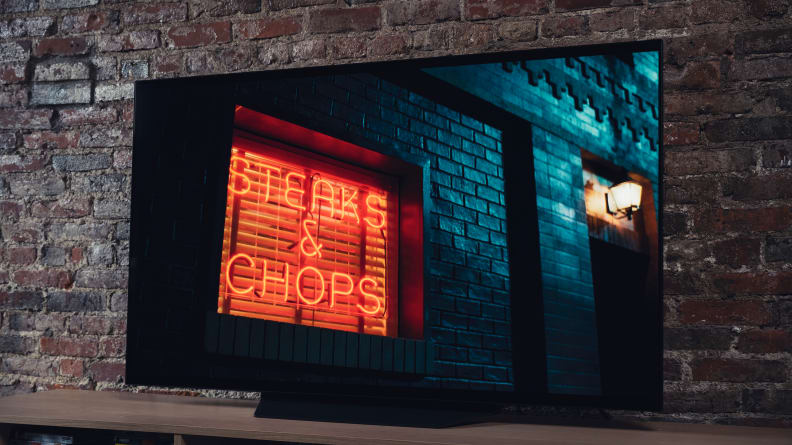
According to our lab tests, the BX covers 97% of the extra-wide P3 color gamut.
Like most OLED TVs, the BX's color production is beautiful, too; the BX offers rich, voluminous reds and greens to go along with its stellar contrast. Our lab tests reveal that the BX covers a whopping 97% of the expanded P3 color gamut, which means that high-quality HDR content will look remarkably vivid.
When it comes to motion handling, the BX's native 120-Hz refresh rate—as well as its toolbox of motion enhancement tools—will keep things smooth and lifelike regardless of whether you're watching a movie or playing video games. I find that LG's adjustable "De-Judder" slider works best on lower settings, but it is possible to crank the motion interpolation settings to a smoother, more soap-opera-like setting—if that's your thing. Additionally, switching on the TV's "OLED Motion" setting will enable black frame insertion, which limits blur but may dim the picture.
Ultra-thin design
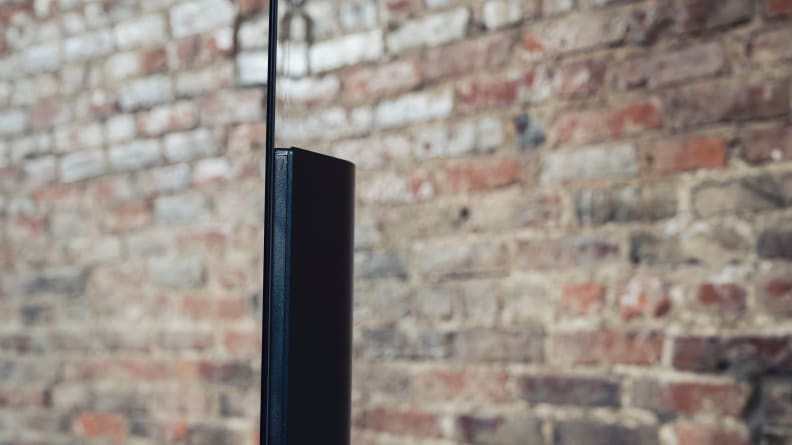
Like most OLED TVs, the LG BX's panel is thinner than most smartphones.
Since OLED TVs don't rely on a bulky backlight apparatus like most high-end TVs, engineers can design their panels to be wafer thin. The BX—like all of LG's most recent OLED TVs—is a marvel of design. The internal components of the TV are housed in a slim, boxy compartment affixed to the back of a panel that just might be thinner than the smartphone in your pocket. It's an eye-catching piece of technology even before it's powered on.
Below the panel sits the BX's stand: a downward-sloping, trapezoidal slab whose surface texture resembles brushed steel. Ultimately, I'd like to see LG move away from this particular design element, but it is nicer than the boomerang-shaped feet that prop up most of the TV panels on the market today.
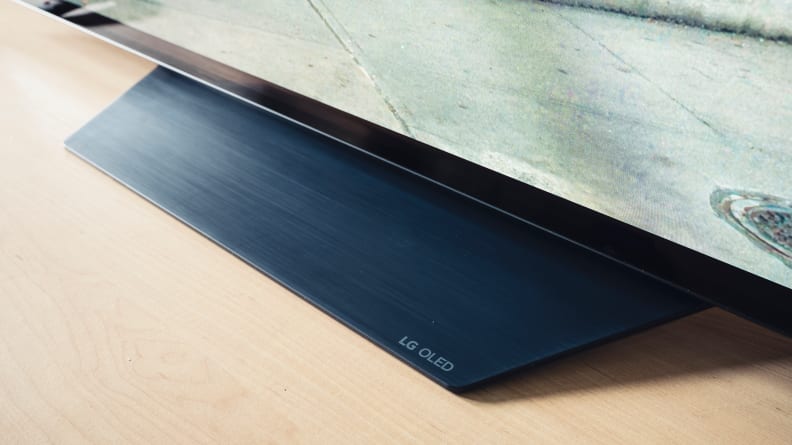
The slab-like stand isn't the freshest look, but it's at least more visually interesting than the boomerang-shaped feet that prop up most TVs on the market today.
Future-proof features
One of the key hardware features that sets the LG BX apart from its competition is its array of next-generation HDMI ports, which will allow users to get the most out of their TV for years to come.
The current HDMI standard, HDMI 2.0, supports a 4K picture at 60 FPS (Frames Per Second) or an 8K picture at 30 FPS. HDMI 2.1, on the other hand, supports 4K resolution at 120 FPS, 8K resolution at 60 FPS, and will ultimately support 10K resolution (if and when the industry happens to reach that point). You can read all about the benefits of HDMI 2.1, but for the purposes of this review, here's what you need to know: Like all of LG's 2020 OLED TVs, the BX is equipped with HDMI 2.1 ports, which makes it a cutting-edge TV for forward-thinking AV enthusiasts.
HDMI benchmarks might be one of the last things on your mind when shopping for a new TV, but HDMI 2.1 may be the difference-maker when it comes to enjoying new features on the Xbox Series X and the PlayStation 5, like Variable Refresh Rate (VRR) and Auto Low Latency Mode (ALLM). If I were investing in a top-shelf TV for years to come, I would strongly take these features into consideration.
What We Don't Like
Not as bright as mid-range and high-end QLED TVs
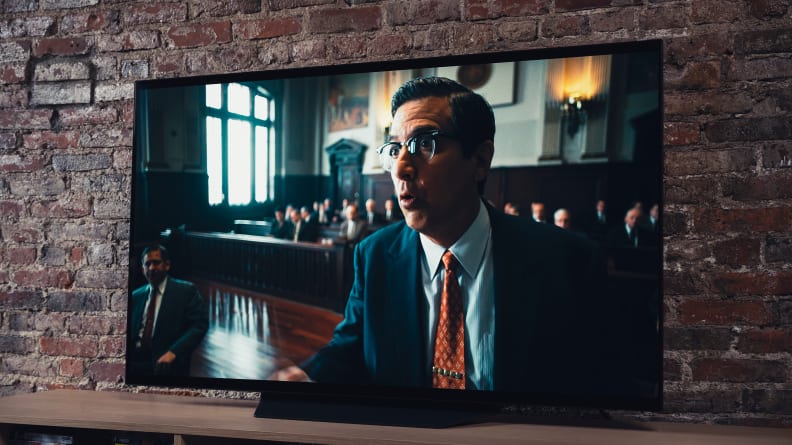
The LG BX regularly outputs brightness in the 500-nit range, but it's not nearly as bright as most top-shelf quantum dot TVs and falls short of the brightness levels of higher-end OLED TVs like the LG CX and the Sony A8H.
There's no way around it: The BX features incredible contrast, but its peak brightness levels won't do you any favors in rooms rich with ambient light.
This isn't to say that the BX isn't bright enough; we clocked its peak brightness levels around 500-550 nits when the TV was in its "Cinema (HDR)" picture setting, which is higher than most mid-range LED TVs in 2020. However, if you're the type of person who wants to invest in a high-end TV, it's worth noting that "high end" and "very bright" are not synonymous. There is such a thing as a relatively dim top-shelf TV, and the BX is a good example of one. Commercial OLED TVs aren't yet capable of QLED-level brightness, and as far as OLEDs go, the BX is one of the dimmer we've seen this year.
The BX's inky black levels do help to boost the picture's brighter elements, but if you're looking to outfit a living room that receives a good amount of sunlight, you may want to turn your attention to quantum dot TVs—or at the very least, a brighter OLED.
Low cost for an OLED but a high cost for most folks
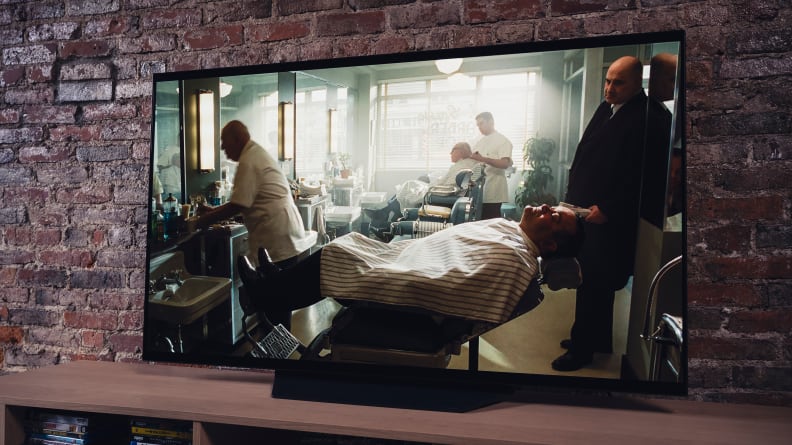
It will be interesting to see how Vizio's 2020 OLED series stacks up against the LG BX.
One of the reasons that TVs like the BX are so exciting is because they offer top-tier TV technology at an eminently consumer-friendly price point compared to what a TV like this would've cost a mere five years ago. That said, for most of us, the asking price is still high enough to be a deal-breaker.
Is the LG BX appropriately priced? Given its performance chops and features, absolutely. But for most people, OLED TVs might not represent an economically sensible investment at the moment—especially given the fact that the cost of manufacturing OLED displays continues to trend down.
It'll be interesting to see how Vizio's 2020 OLED lineup—set to release later this year—will stack up against the LG BX. Vizio set the asking price at $1,300 for the 55-inch model and $2,000 for the 65-inch model, which makes the series slightly more affordable than the BX. If you're serious about maximizing your dollar, you might want to hold off on a purchase for a few months to see how the Vizio OLED fares in our performance tests.
Should You Buy It?
Yes, unless you're looking for a brighter option.
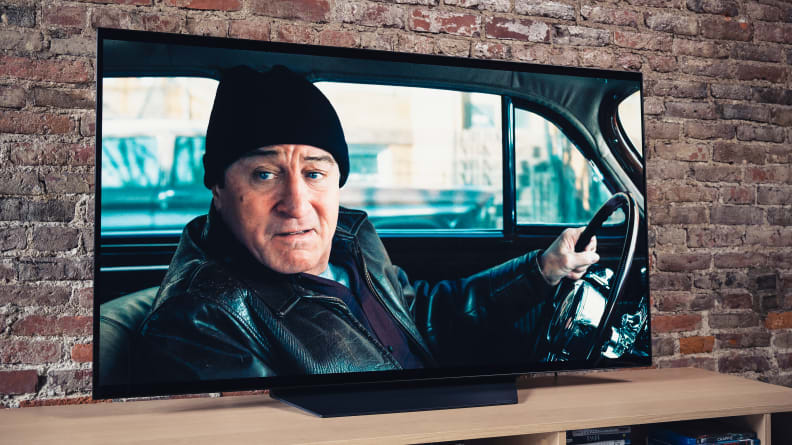
The LG BX is a fantastic TV with a relatively low price tag if you take into consideration the typical costs associated with OLED TVs. You might find, however, that you want to spend a little more money to secure a brighter picture.
The LG BX aims to please shoppers who've yearned for OLED picture quality in the past but may have balked at the price tag that typically comes with it. In this way, the TV is wildly successful; it offers consistently eye-popping performance for a much lower cost than the LG OLEDs of yesteryear. But with a starting price of around $1,500, the BX is nevertheless a significant investment, and it's understandable that folks would be hesitant to make a high-end TV purchase with the understanding that there are far brighter TVs out there.
If you simply must own an OLED TV but you're worried that your living room is too bright to accommodate the BX, the LG CX and the Sony A8H get significantly brighter than the LG BX. Unfortunately, the asking prices for both of these alternatives are much higher, and in the case of the Sony A8H, you'll be inheriting a slightly less user-friendly software experience and no HDMI 2.1 ports.
If you really want to get creative, instead of spending $1,500 on the 55-inch BX, you could spend roughly the same amount of money at Best Buy on the newly released 48-inch LG CX. You'll lose seven inches of screen real estate, but the CX will get brighter than the BX.
If you simply must own a top-shelf TV but you don't necessarily need it to be OLED, you'll find several competitively priced QLED TVs (like the Samsung Q90R, for example, that get twice as bright as the BX, but you'll miss out on the signature OLED black levels, the ultra-thin panel design, and the BX's built-in HDMI 2.1 ports.
All in all, the BX is a tremendously exciting TV that, crucially, will serve you well for several years to come.
Meet the testers
Michael Desjardin graduated from Emerson College after having studied media production and screenwriting. He specializes in tech for Reviewed, but also loves film criticism, weird ambient music, cooking, and food in general.
Julia is the Senior Scientist at Reviewed, which means that she oversees (and continually updates) the testing of products in Reviewed's core categories such as televisions, washing machines, refrigerators, and more. She also determines the testing methods and standards for Reviewed's "The Best Right Now" articles.
Checking our work.
Our team is here to help you buy the best stuff and love what you own. Our writers, editors, and experts obsess over the products we cover to make sure you're confident and satisfied. Have a different opinion about something we recommend? Email us and we'll compare notes.
Shoot us an email
